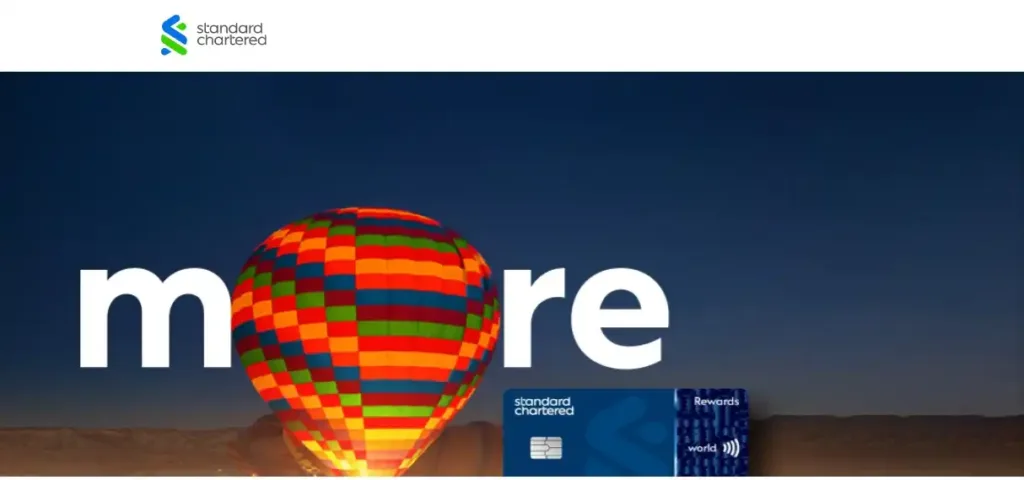
“Learn how to avoid higher TDS deductions by filing Form-13. This guide covers the benefits, step-by-step process, and latest updates for 2023. Save money, improve cash flow, and ensure accurate tax liabilities with expert tips on TDS deduction and Form-13 filing. Perfect for salaried individuals, property owners, and non-residents.”
Tax Deducted at Source (TDS) is a critical component of the Indian tax system, ensuring that the government collects tax revenue efficiently. However, TDS deductions can sometimes lead to unnecessary financial burdens, especially when the deductor applies a higher TDS rate than necessary. This is where Form-13 comes into play. By filing Form-13, taxpayers can avoid additional TDS deductions and ensure that their tax liabilities are accurately reflected. In this comprehensive guide, we’ll explore everything you need to know about TDS deduction, the importance of Form-13, and how to file it to avoid unnecessary tax burdens.
What is TDS Deduction?
TDS, or Tax Deducted at Source, is a mechanism introduced by the Income Tax Department of India to collect taxes at the source of income. Under this system, a person (deductor) making a payment to another person (deductee) is required to deduct tax at the prescribed rates before making the payment. The deducted amount is then remitted to the government.
TDS applies to various types of payments, including salaries, interest, rent, professional fees, and commissions. The primary objective of TDS is to ensure a steady flow of revenue to the government and minimize tax evasion.
Why is TDS Deduction Sometimes Higher Than Required?
In some cases, the TDS rate applied by the deductor may be higher than the actual tax liability of the deductee. This can happen due to the following reasons:
- Higher TDS Rate for Non-PAN Holders: If the deductee fails to provide their Permanent Account Number (PAN), the deductor is required to deduct TDS at a higher rate of 20% or the rate specified by the Income Tax Act, whichever is higher.
- Incorrect Declaration of Income: If the deductee does not provide accurate details of their income or tax-saving investments, the deductor may apply a higher TDS rate.
- Lack of Form-15G/15H Submission: For individuals with income below the taxable limit, submitting Form-15G (for individuals below 60 years) or Form-15H (for senior citizens) can help avoid TDS. Failure to submit these forms may result in unnecessary TDS deductions.
- Higher TDS Rates for Non-Residents: Non-residents are subject to higher TDS rates under certain circumstances, which may not align with their actual tax liability.
Latest TDS Rates for FY 2024-25 (AY 2025-26)
The Union Budget 2025 introduced several changes to the TDS rates and thresholds to simplify the tax process and provide relief to taxpayers. Here are some key updates:
- Interest on Securities (Section 193): The threshold limit has been raised to ₹10,000.
- Interest other than Interest on Securities (Section 194A): For senior citizens, the limit is now ₹1,00,000, and for others, it is ₹50,000 when the payer is a bank, cooperative society, or post office.
- Dividend (Section 194): The threshold limit has been increased to ₹10,000.
- Winnings from Lottery, Crossword Puzzle, etc. (Section 194B): TDS will be deducted only when a single transaction exceeds ₹10,000.
- Insurance Commission (Section 194D): The threshold limit is now ₹20,000.
- Rent (Section 194-I): The limit has been raised to ₹6,00,000 per financial year.
- Professional or Technical Services (Section 194J): The threshold limit is now ₹50,000.
What is Form-13?
Form-13 is an application form under the Income Tax Act, 1961, that allows taxpayers to request a lower or nil TDS deduction. By submitting this form, individuals can ensure that TDS is deducted accurately based on their estimated income and tax liability. This form is particularly useful for those whose income sources attract excessive TDS deductions, such as bank interest, dividends, rental income, pension payments, contractual income, commission income, professional service payments, and Non-Resident Indian (NRI) income.
When Should You File Form-13?
Form-13 should be filed in the following scenarios:
- Lower Tax Liability: If your actual tax liability is lower than the TDS rate being applied, you can file Form-13 to request a lower TDS deduction.
- No Tax Liability: If your income is below the taxable limit or you have significant tax-saving investments, you can request a nil TDS deduction.
- Non-Residents: Non-residents can file Form-13 to avoid higher TDS rates if their actual tax liability is lower.
- Rental Income: Property owners receiving rental income can file Form-13 to avoid higher TDS deductions.
Who Should File Form-13?
Form-13 is suitable for individuals and businesses who face excessive TDS deductions despite having low or minimal tax liability. This includes:
- Salaried employees whose calculated tax liability is lower than the TDS deducted.
- Senior citizens earning income from pensions, bank interest, or rent.
- Individuals receiving rental income, dividends, or earnings from investments.
- Business owners and freelancers seeking to minimize TDS deductions on their income.
- NRI taxpayers earning income from Indian sources who qualify for reduced TDS.
Benefits of Filing Form-13
Filing Form-13 offers several financial and administrative advantages:
- Avoid Excess TDS Deduction: Ensures that TDS is deducted only in proportion to your actual tax liability.
- Better Cash Flow Management: Prevents excessive deductions, giving you better control over your monthly expenses.
- No Need for Refund Claims: Reduces the hassle of waiting for refunds due to over-deduction of TDS.
- Quick and Efficient Process: Online applications are processed faster, ensuring timely issuance of certificates.
- Simplifies Tax Planning: Helps individuals and businesses manage their taxes efficiently.
Important Dates to File Form-13
For FY 2024-25, the last date to apply is March 15, 2025. For FY 2025-26, the application window has already started. Early submission is advised for timely processing.
How to File Form-13: Step-by-Step Guide
Filing Form-13 is a straightforward process. Here’s a step-by-step guide to help you through it:
Step 1: Download Form-13
Form-13 can be downloaded from the official website of the Income Tax Department or the TRACES portal.
Step 2: Fill in the Required Details
Provide the following details in Form-13:
- Name, address, and PAN of the applicant.
- Details of the deductor (name, address, and TAN).
- Nature of income (e.g., salary, rent, interest).
- Estimated total income for the financial year.
- Reasons for requesting a lower or nil TDS deduction.
Step 3: Attach Supporting Documents
Attach the following documents along with Form-13:
- Proof of income (e.g., salary slips, rent agreements).
- Proof of tax-saving investments (e.g., receipts for insurance premiums, ELSS investments).
- PAN card copy.
- Previous years’ income tax returns (if applicable).
Step 4: Submit the Form
Submit the completed Form-13 and supporting documents to the jurisdictional Assessing Officer (AO). You can submit the form either online or offline, depending on the AO’s preference.
Step 5: Await Approval
Once the AO reviews your application, they will issue a certificate under Section 197, specifying the lower or nil TDS rate. Share this certificate with the deductor to ensure the correct TDS rate is applied.
Common Mistakes to Avoid When Filing Form-13
- Incorrect Income Estimates: Ensure that your income estimates are accurate to avoid rejection of your application.
- Incomplete Documentation: Make sure all required documents are complete and correctly uploaded.
- Late Submission: Submit your application well before the deadline to avoid any last-minute issues.
- Incorrect PAN Details: Double-check your PAN details to ensure they are correct.
- Not Checking Eligibility: Verify your eligibility before applying to avoid unnecessary rejections.
Latest Updates on TDS Deduction and Form-13 (2023)
- Increased Use of Digital Platforms: The Income Tax Department has made it easier to file Form-13 online through the TRACES portal, reducing the need for physical submissions.
- Higher TDS Thresholds: The government has increased TDS thresholds for certain payments, such as interest on bank deposits, reducing the need for Form-13 in some cases.
- Focus on Non-Residents: The Income Tax Department has introduced stricter guidelines for TDS deductions on payments to non-residents, making Form-13 even more critical for this category.
- Integration with AIS and TIS: The Annual Information Statement (AIS) and Taxpayer Information Summary (TIS) now provide detailed insights into TDS deductions, helping taxpayers make informed decisions about filing Form-13.
To Conclude
Filing Form-13 is an effective way to avoid excessive TDS deductions and manage your cash flow better. By understanding the latest TDS rates and following the correct procedure to file Form-13, taxpayers can ensure that their TDS deductions are in line with their actual tax liability. This not only simplifies tax planning but also reduces the hassle of claiming refunds. Stay updated with the latest tax regulations and make informed decisions to optimize your tax savings.
Frequently Asked Questions (FAQs)
1. Can Form-13 be filed online?
Yes, Form-13 can be filed online through the TRACES portal or the official website of the Income Tax Department.
2. How long does it take to process Form-13?
The processing time for Form-13 varies depending on the Assessing Officer. It typically takes 15-30 days.
3. Is Form-13 applicable to all types of income?
Form-13 is applicable to income such as salary, rent, interest, and professional fees. However, it may not apply to certain types of income, such as lottery winnings.
4. Can Form-13 be filed for previous financial years?
No, Form-13 is applicable only for the current financial year. It cannot be filed for previous years.
-

Stop Paying Minimum Balance Fees: The “Secret” RBI Account Everyone Can Get!
-

The “Shadow Bank” Loophole is Closed: Why Your NBFC Loan Just Became a Bank Loan in Disguise
-

Bank of Maharashtra Breaks the Floor: Why 7.10% May Be the Lowest You’ll See
-

The 18-Month Trap: Why the New US Work Permit Rule is a Silent Crisis for Indians in 2025



























